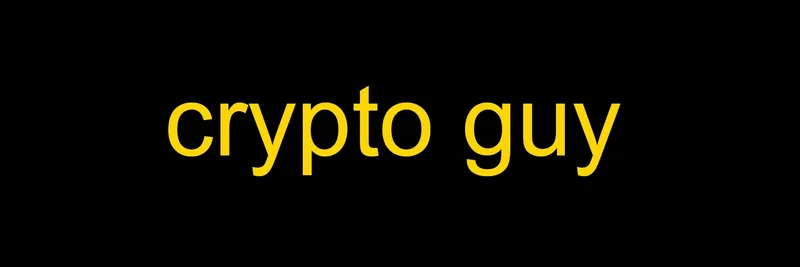Have you ever considered how the intense computational power of Bitcoin mining could be harnessed not just for digital currency, but also for practical, everyday needs like heating your home? This innovative approach is gaining traction, and a recent thread on X by Yieldus Maximus (Ben) dives deep into the mechanics and economics of using Bitcoin mining as a source of heat. Let's break it down.
The Concept: Mining for Heat
Bitcoin mining, traditionally seen as a resource-intensive process, generates a significant amount of heat. This heat, often considered a byproduct, can be captured and utilized effectively, especially in colder climates. The thread highlights a setup using a fog hashing C6 immersion cooling tank, which houses six Bitcoin miners. These miners, submerged in non-toxic dielectric fluid, not only mine Bitcoin but also provide heat to a 3000 sq ft house in the mountains of central Idaho.
How It Works
- Immersion Cooling: The miners are submerged in a dielectric fluid that absorbs the heat generated during mining. This fluid is then pumped through a heat exchanger.
- Heat Distribution: The heat exchanger warms a glycol/water mix, which is distributed throughout the house via a hydronic heating system.
- Summer Operations: In warmer months, excess heat is dumped outside using an exterior dry cooler, allowing continuous mining without overheating the house.
This setup is not just about mining; it's about integrating mining into the home's heating infrastructure, turning a potential waste product into a valuable resource.
Calculating ROI
The thread poses an intriguing question about the Return on Investment (ROI) for a $7,000 CAPEX using six S19j Pros, constantly operated at rated power in an immersion tank. Let's crunch the numbers based on the provided details.
Assumptions
- CAPEX: $7,000 for the setup, including the immersion tank and miners.
- Miners: Six S19j Pros, each with a hashrate of approximately 100 TH/s and a power consumption of 3,250 watts at rated power.
- Power Rate: $0.06 per kW/hr.
- House Size: 3000 sq ft with a hydronic heat distribution system.
- Heat Demand: The setup replaces water and room heat, with a brazed plate exchanger in the fluid circuit.
Step-by-Step ROI Calculation
Power Consumption:
- Each S19j Pro consumes 3,250 watts.
- Total power consumption for six miners: ( 6 \times 3,250 = 19,500 ) watts or 19.5 kW.
- Daily power cost: ( 19.5 , \text{kW} \times 24 , \text{hours} \times 0.06 , \text{$/kWh} = 28.08 , \text{$} ).
Heat Output:
- Each miner produces approximately 12,000 BTU/hr (as mentioned in the thread).
- Total heat output for six miners: ( 6 \times 12,000 = 72,000 , \text{BTU/hr} ).
- This heat is sufficient to warm the 3000 sq ft house, especially in a cold climate like central Idaho.
Bitcoin Mining Revenue:
- The thread suggests a gross revenue of approximately $33 to $66 per day, depending on the type of miners and current Bitcoin prices.
- For simplicity, let's assume an average of $50 per day.
Cost Savings on Heating:
- Traditional hydronic heating systems can cost between $1.50 to $3.00 per 1,000 BTU, depending on fuel type and efficiency.
- With the mining setup providing 72,000 BTU/hr, the daily heat output is ( 72,000 , \text{BTU} \times 24 , \text{hours} = 1,728,000 , \text{BTU/day} ).
- At $2.00 per 1,000 BTU, the cost savings are ( 1,728,000 , \text{BTU/day} \div 1,000 \times 2.00 , \text{$/1,000 BTU} = 3,456 , \text{$/day} ).
Net Daily Profit:
- Bitcoin mining revenue: $50/day.
- Power cost: $28.08/day.
- Heat cost savings: $3,456/day (theoretical, as this is the cost you would have paid otherwise).
- Net daily profit: ( 50 - 28.08 + 3,456 = 3,477.92 , \text{$/day} ).
ROI Timeline:
- Initial investment: $7,000.
- Daily net profit: $3,477.92.
- ROI timeframe: ( 7,000 \div 3,477.92 \approx 2 , \text{days} ).
This calculation is overly simplistic and doesn't account for maintenance, depreciation, or fluctuations in Bitcoin prices and energy costs. However, it illustrates the potential for rapid ROI when mining is used to replace heating costs.
Tax Implications
The thread also touches on the tax benefits of claiming energy costs as a business expense. As a sole proprietor homeowner mining "crypto," you can deduct ordinary and necessary expenses related to your mining operation. This includes electricity costs, which are significant in this setup. According to Crypto Mining Tax 2025 guidelines, business miners list gross mining receipts on Schedule C and deduct expenses, potentially reducing taxable income.
Technological Innovations
The use of immersion cooling is a game-changer. Unlike traditional air cooling, immersion cooling allows miners to operate at higher efficiencies without the risk of overheating. The dielectric fluid not only cools the miners but also captures heat for reuse. This technology, combined with smart firmware like Braiins OS, enables precise control over miner performance and heat output.
Conclusion
Bitcoin mining as a source of heat is not just a theoretical concept; it's a practical solution that can offer significant ROI, especially in regions with high heating demands and low electricity costs. The setup described in the thread showcases how innovative technologies like immersion cooling and hydronic heating systems can transform mining from a mere digital endeavor into a dual-purpose operation. Whether you're a blockchain practitioner or a homeowner looking for efficient heating solutions, this approach merits consideration.
For those interested in exploring similar setups, resources like fog hashing and SupplyHouse provide the necessary components. And remember, as the world of crypto continues to evolve, so do the ways we can integrate it into our daily lives.
Stay tuned to Meme Insider for more insights into the intersection of technology and everyday applications in the blockchain space.




